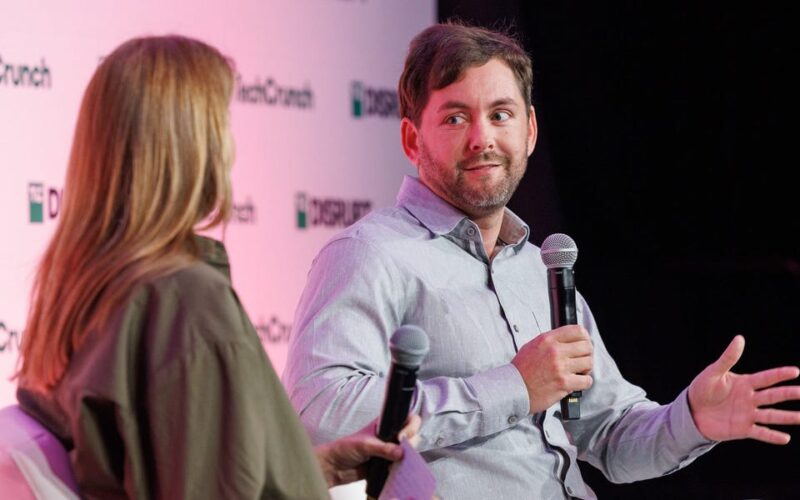- Zoox cofounder Jesse Levinson said at TechCrunch Disrupt that he drives a Tesla.
- He said he sometimes uses Tesla’s so-called Full Self-Driving mode.
- The experience is “stressful” because of its potential to make a driver complacent, he said.
The cofounder of Zoox, an Amazon-backed robotaxi company, said he sometimes feels nervous when using Tesla’s so-called Full Self-Driving mode.
Jesse Levinson, cofounder and chief technical officer of Zoox, owns a Tesla, he said, and sometimes uses the vehicle’s FSD, Tesla’s driver assistance software that requires constant driver supervision.
He shared his observations of the technology Wednesday at the TechCrunch Disrupt conference in San Francisco.
FSD is a key piece of Tesla technology that will be critical for the company’s fully autonomous vehicle and robotaxi visions. Tesla CEO Elon Musk said during the unveiling of the Cybercab earlier this month that his company will have unsupervised fully autonomous vehicles in California and Texas by next year and that the robotaxi will go into production by 2026.
Levinson said that, as it stands now, FSD often makes the right decisions until it doesn’t, making for a stressful driving experience.
“I do find it a bit stressful because, again, usually it does the right thing and then it sort of lulls you into this false sense of complacency and then it does the wrong thing,” Levinson said.
Musk has an ambitious timeline to roll out unsupervised self-driving. Meanwhile, Tesla is facing regulatory scrutiny for its technology. The National Highway Traffic Safety Administration is investigating Tesla’s FSD following reports of four crashes, including one fatal incident during which a pedestrian was struck by a Tesla that had FSD engaged, the agency said.
Tesla’s website states that FSD systems require “active driver supervision and do not make the vehicle autonomous.”
A spokesperson for Tesla did not respond to a request for comment, and representatives for Zoox declined to comment further.
Levinson said part of the problem with Tesla’s approach to autonomous driving is its reliance on cameras.
He said that cameras aren’t enough to help vehicles achieve safe, fully autonomous driving at this point, joining a chorus of Tesla critics who have critiqued Musk’s approach of ditching radar technology in favor of external cameras and other sensors to help a car navigate its environment.
“We just don’t, as a society, have the technology that can take cameras, feed them into a computer, and drive as safely as a human. That doesn’t exist yet, and it’s not close to existing,” he said.
Levinson added that Zoox’s “fundamental belief” is that robotaxis should be “significantly safer” than a human because people have a lower tolerance for mistakes made by robots.
“So our perspective is you really do need significantly more hardware than Tesla’s putting in their vehicles to build a robotaxi that’s not just as safe but especially safer than a human being,” he said.
Not everyone is a skeptic of Tesla’s autonomous driving vision.
Andrej Karpathy, a founding team member of OpenAI and former senior director of AI at Tesla, said on a podcast in September that Musk’s company does use LiDAR technology for self-driving — just not at the same stage of deployment as its rivals like Waymo.
Waymo, for example, has LiDAR sensors, a radar system, and 29 cameras attached to its fleet of Jaguar I-PACE SUVs which rideshare users can order.
Tesla, on the other hand, only uses LiDAR sensors during the training or data gathering stage of its FSD system, Karpathy said. That data is then used to inform the camera-reliant FSD used by drivers.
The ex-Tesla director said this method of deployment is much more scaleable and could put Tesla ahead in the next decade.
Levinson’s company is a competitor to Tesla. He has challenged Musk’s ambitious timelines for Tesla’s full self-driving vision before.
Like Waymo, Zoox uses a combination of LiDAR, radar, and cameras for its autonomous driving system.
The cofounder said at the Wednesday conference that Zoox will begin testing its robotaxi in the South of Market neighborhood in San Francisco and on the Las Vegas Strip in the next few weeks.
Source link
lol

